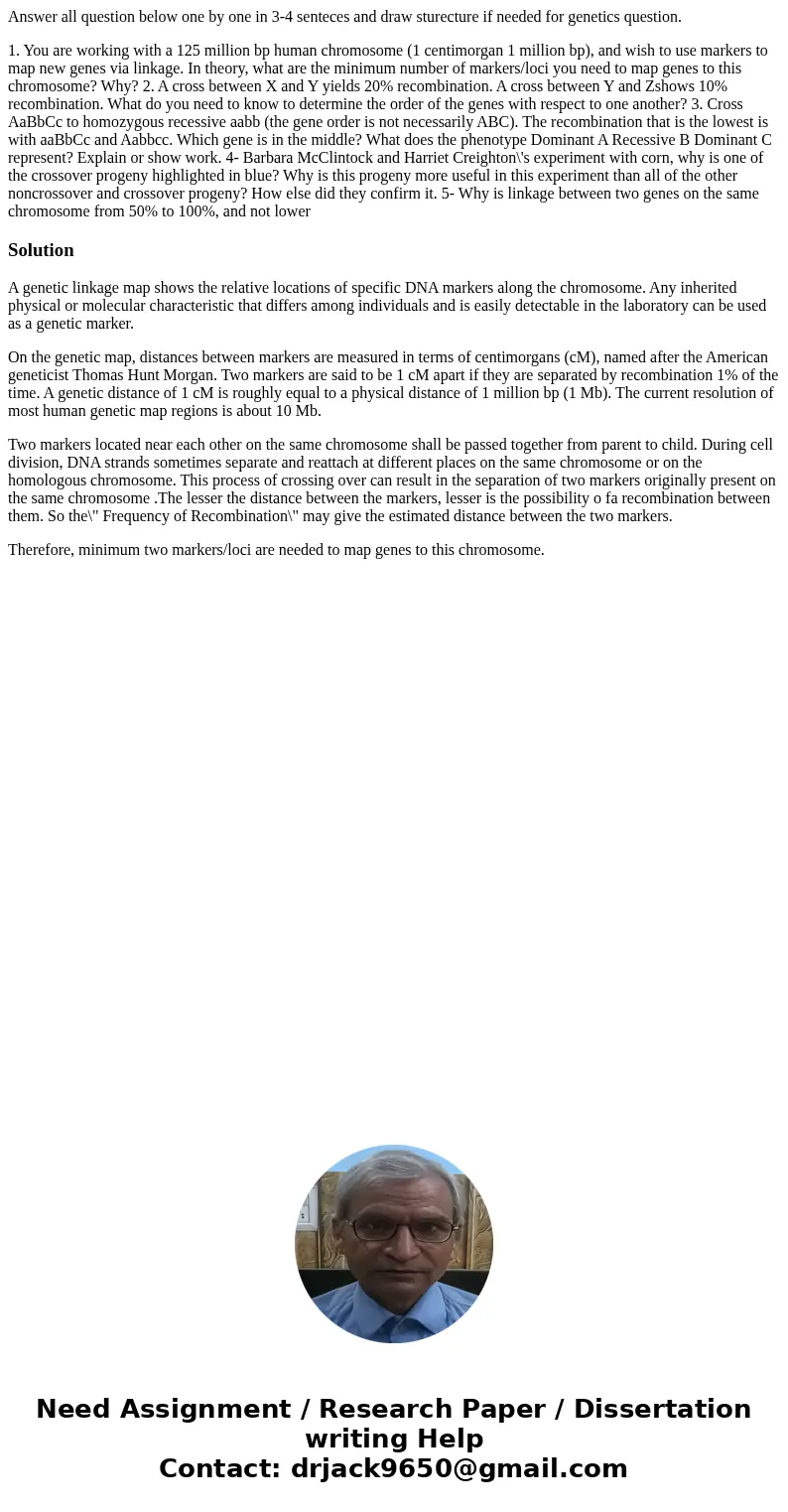Answer all question below one by one in 34 senteces and draw
Answer all question below one by one in 3-4 senteces and draw sturecture if needed for genetics question.
1. You are working with a 125 million bp human chromosome (1 centimorgan 1 million bp), and wish to use markers to map new genes via linkage. In theory, what are the minimum number of markers/loci you need to map genes to this chromosome? Why? 2. A cross between X and Y yields 20% recombination. A cross between Y and Zshows 10% recombination. What do you need to know to determine the order of the genes with respect to one another? 3. Cross AaBbCc to homozygous recessive aabb (the gene order is not necessarily ABC). The recombination that is the lowest is with aaBbCc and Aabbcc. Which gene is in the middle? What does the phenotype Dominant A Recessive B Dominant C represent? Explain or show work. 4- Barbara McClintock and Harriet Creighton\'s experiment with corn, why is one of the crossover progeny highlighted in blue? Why is this progeny more useful in this experiment than all of the other noncrossover and crossover progeny? How else did they confirm it. 5- Why is linkage between two genes on the same chromosome from 50% to 100%, and not lowerSolution
A genetic linkage map shows the relative locations of specific DNA markers along the chromosome. Any inherited physical or molecular characteristic that differs among individuals and is easily detectable in the laboratory can be used as a genetic marker.
On the genetic map, distances between markers are measured in terms of centimorgans (cM), named after the American geneticist Thomas Hunt Morgan. Two markers are said to be 1 cM apart if they are separated by recombination 1% of the time. A genetic distance of 1 cM is roughly equal to a physical distance of 1 million bp (1 Mb). The current resolution of most human genetic map regions is about 10 Mb.
Two markers located near each other on the same chromosome shall be passed together from parent to child. During cell division, DNA strands sometimes separate and reattach at different places on the same chromosome or on the homologous chromosome. This process of crossing over can result in the separation of two markers originally present on the same chromosome .The lesser the distance between the markers, lesser is the possibility o fa recombination between them. So the\" Frequency of Recombination\" may give the estimated distance between the two markers.
Therefore, minimum two markers/loci are needed to map genes to this chromosome.

 Homework Sourse
Homework Sourse